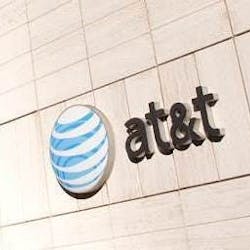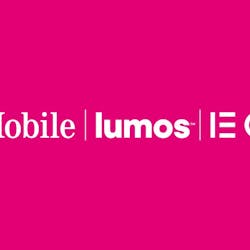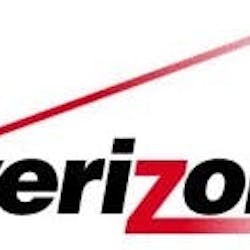Harmonic may be a significant DOCSIS supplier to cable MSOs, but the company has found a growing niche in the burgeoning fiber-to-the-home (FTTH) market segment.
During its fourth-quarter earnings call, Patrick Harshman, president and CEO of Harmonic, told investors that while it is making continual progress with DOCSIS, the company is finding new FTTH prospects in the traditional cable industry and fiber overbuilders.
“Augmenting our growing multiyear pipeline of DOCSIS opportunities, we also continue to make solid progress during the fourth quarter on building a synergistic fiber-to-the-home business,” he said. “In the fourth quarter, we secured several new fiber customer wins spanning existing cable and noncable fiber-first operators.”
To address the FTTH opportunity and challenge incumbent vendor competitors, Harmonic has ramped up its fiber specialist sales team and expanded its FTTH product line.
In October, Harmonic introduced its Pier OLT shelf, which includes high-power OLT optics to enable downlink reach up to 60 km, streamlined plant design, and simplified deployment of outdoor access networks. The platform can accommodate various deployment scenarios, including support for 32 XGS PON, 16 Combo PON, or 32 GPON service groups per rack unit.
Within its existing cable customer base, Harmonic is finding its FTTH product set is resonating with various business lines. “We've won quite a bit of business with some significant existing cable accounts, but very often, within those accounts, it's a different team,” Harshman said. “This could be a team dealing with business services, services to MDUs, as well as the groups who are expanding the footprint, the so-called edge-out activity, acquiring new homes, passed.”
Sharpening the fiber focus
While Harmonic has been making momentum in the FTTH market, it has had to adjust its product line to address specific market geographies. In particular, the company had to address the need for not only 10G but also 1 Gbps.
“One of the things we discovered, particularly internationally, was that there was a couple of holes in the product line,” Harshman said. “For instance, we focused on 10G initially, and several accounts are also looking for a complementary one gig solution, which is still a legacy solution.”
He added that by adding the 1 Gbps capability, it now has a more complete solution that can address the needs of domestic and international service providers.
“So, we've added some capabilities around that, I think, bulletproofing our offering and giving us a complete end-to-end solution for domestic and international operators,” Harshman said. “And this is looking at both cable and new, say, traditional telecom or fiber-first operators.”
He added, "We're also excited about the progress we're making with those new noncable accounts.”
DOCSIS 4.0 movement
In tandem with its growing FTTH focus, Harmonic continues to see momentum in the DOCSIS 4.0 market segment.
The company has developed a pipeline of new customers for its cOS Broadband Platform, which can unify variants of DOCSIS 4.0, Full Duplex (FDX) Extended Spectrum (ESD), and 10G fiber technologies for the inside and outside plant. The platform consolidates the management of cable and fiber network assets into one system.
Patrick Harshman, president and CEO of Harmonic Broadband, said its cOS platform is a key differentiator. “Our software court has seamlessly accommodated the new standard, as have our Remote PHY edge device designs,” he said. “We're successfully powering several early DOCSIS 4.0 deployments launched late in the year, and we are uniquely positioned as the go-to partner for any operator planning a DOCSIS 4.0 launch or skill deployment in 2024 or 2025.”
Harmonic’s DOCSIS 4 nodes are fully backward compatible with DOCSIS 3.1.
Harshman said the company expects at least one customer to migrate to DOCSIS 4.0-enabled edge devices this year and that Comcast and Charter are contributing over “10% of our revenue.”
“While at different places in the respective [DAA] architecture deployment journeys, we're grateful to be working with both of these industry leaders and are incredibly focused on supporting their respective strategic initiatives,” he said.
Harmonic is also keen on telling its customers that its DOCSIS 4.0 is backward compatible with DOCSIS 3.1. “So, if you're a customer and you've got to deploy in Akron, Ohio, you may not be ready with the modem and the RF amplifiers, but you may choose to buy DOCSIS 4,0 capable nodes now,” Harshman said.
Charting growth paths
Harmonic reported that fourth-quarter earnings were $167.1 million, up from $164.3 million in the same period a year ago, reflecting the gains it made in its broadband segment.
Broadband segment revenue was $115.2 million, up from $96 million in the fourth quarter of 2022. The number of global customers deploying Harmonic’s solution reached 108, up 19% year-over-year, with corresponding 26.3 million DOCSIS cable modems now served worldwide. ‘
Harshman said that the company is seeing further potential in its DOCSIS business. “About 15% of cable modems deployed globally, again, highlighting the substantial DOCSIS growth opportunity still in front of us,” he said. “We had several new customer wins during the fourth quarter, including a new top 10 North American operator for whom we made initial shipments.”
Looking toward the whole year, Harmonic has forecasted that broadband revenue will increase 24% year-over-year at the midpoint of its guidance. Based on the momentum the company expects to see in the second half of 2024, it anticipates 2025 Broadband revenue growth to accelerate year-over-year.
Harmonic expects to deliver revenue between $70 million and $80 million for its broadband business, reflecting a technology transition of one of our largest customers.
“For Broadband, we expect to see a return to top-line growth in the second half of the year and the potential to hit record quarterly revenue during that time frame,” said Walter Jankovic, CFO of Harmonic. “In 2025, we expect our growth rate to accelerate from 2024 levels as our larger customers ramp up their spending levels in the second half of 2024, which should build greater momentum as we enter 2025.”
For more news, products, and technical profiles in broadband cable and telecommunications technology, subscribe to BTR's newsletter and follow us on LinkedIn, Twitter, and Facebook.






